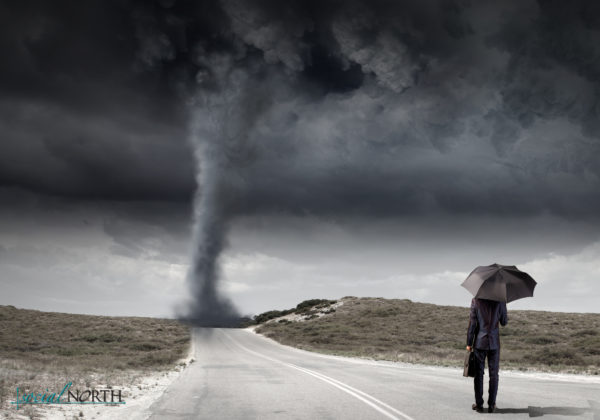How is your business managing its digital brand messaging during the crisis?
There are a million different ways a crisis could impact your store or your business’ reputation, operations or employees. From unhappy customers to product defects to employees doing or saying things they shouldn’t – and now the Coronavirus Pandemic. While the fundamentals of digital crisis management are straightforward, in the midst of COVID-19 our playbook is rewritten daily – sometimes hourly.
- Plan for the worst
- Prepare to be nimble
- Adapt, adapt, adapt
The Coronavirus Pandemic is changing our world quickly, which makes business as normal impossible. You’re likely struggling through the same fear and uncertainty that your customers are so take a deep breath and pause for a moment. Now is the time to regroup and think through your next steps carefully.
To help your business navigate through this crisis, a top-down strategy – with digital media the focus – is critical to effective crisis management. Knowing when and how to activate your plan and managing through rapidly changing conditions will ensure both your short term success and the longevity of your store.
Step 1 – Plan for the worst
In recent years, the rapidly evolving digital landscape has changed how we connect with our customers – and how they interact with us before, during and after their purchases. There has never been a better time for your company to lead with empathy – in everything you do. Fostering a strong sense of connection will help position your store for both your customers and your employees as we navigate through this pandemic.
Begin by stepping back and reviewing your social strategy with a critical eye.
- Review regularly scheduled content. In the coming days and weeks, review your scheduled updates regularly to ensure they’re still relevant as conditions change. Silly memes may not be appropriate in the midst of an escalating tragedy.
- Meet regularly with your social media manager. The best social media managers are strong, empathetic communicators who keep their customers at the center of everything they do. Ensure your social media manager understands your vision during the crisis and how to execute.
- Open communication channels with all staff. During a crisis, your social media manager, your sales force and your operations people all need to know the game plan so everyone is delivering the same message.
Coupling open communication with regular reviews of the strategy will keep your messaging on-point and unified. It will also help you and your staff watch for opportunities to support business operations differently as consumers stay home and may have different needs than they had a month ago.
At Colder’s and Famous Tate customers can talk to a sales person on the phone or in an online chat. Hudson’s Furniture’s social media messaging is a thoughtful balance of advice, inspirational messages and sales. City Mattress has added physician-led podcasts to their social media channels and Macy’s has added a link to their home page, directing customers to donate to Meals on Wheels.
Make no mistake. We will all be judged how we navigate through this crisis. Stores that do it well will earn customer loyalty for years to come.
Step 2 – Prepare to be nimble
While you’re focused on the global pandemic and navigating safely through it, the need for a crisis communication strategy is as strong as ever. With a crisis plan in place, your team can execute quickly and with agility, mitigating or avoiding crises before they get out of hand. Remember, most crisis-level issues your store will face originate online, whether from a disgruntled customer or defective product.
The following plan can serve as a roadmap to begin building – or refining – yours.
Social media crisis plan
Create a decision flowchart
- Begin with a simple bullet-point list that details if this happens, that follows and this person is contacted, etc.
- Ensure each person involved understands their responsibility
- Align it with your traditional communication plan
Assign a spokesperson
- One voice carries one message – amplified by others if needed
- The spokesperson can be the owner, a director or a manager and the message can be amplified by others
Do fire drills
- Practice so everyone is comfortable with their role in the plan
- The more comfortable you are with the *what if* situations, the more comfortable you’ll be in the midst of a real disaster
Respect the clock
- Time is of the essence in social media – 24 hours is too long
- All hands are on deck from the moment of impact
As conditions change for the pandemic – and other crises are introduced – ensure you have a priority sequence for outgoing communication mapped out and ready to go.
- Prioritize which social platforms will carry the message
- Craft a customer newsletter, if appropriate
- Create an outline for outbound responses to customer inquiries – personalize as needed
Step 3 – Adapt, adapt, adapt
You’ve done all the heavy lifting, reviewed your social strategy and mapped out a plan for when the worst happens. But remember that your plan is high level and outlines the broad strokes of what to do and when. As conditions evolve, your social media manager will be making in-the-moment decisions to ensure your messages are relevant, timely and not tone deaf.
 During the pandemic, regular assessments will help keep your social strategy on track as conditions change. But when the crisis has passed, remember that a post-mortem is as important as the original plan. Did everyone participate as expected? How did your customers and employees respond to the messages? Assess each touch point and be critical of where you could have done better, acted more quickly or crafted a more empathetic message. This isn’t about pointing fingers – it’s about helping your team understand the weak points of your crisis communications so you’ll be stronger for the next one.
During the pandemic, regular assessments will help keep your social strategy on track as conditions change. But when the crisis has passed, remember that a post-mortem is as important as the original plan. Did everyone participate as expected? How did your customers and employees respond to the messages? Assess each touch point and be critical of where you could have done better, acted more quickly or crafted a more empathetic message. This isn’t about pointing fingers – it’s about helping your team understand the weak points of your crisis communications so you’ll be stronger for the next one.
Crises can be stressful and overwhelming but being prepared and working as a team will help reduce some of the strain. Remember, the best offense is always a good defense.
If you need help crafting your crisis communication plan, shoot me an email and let’s talk.


Latest comments